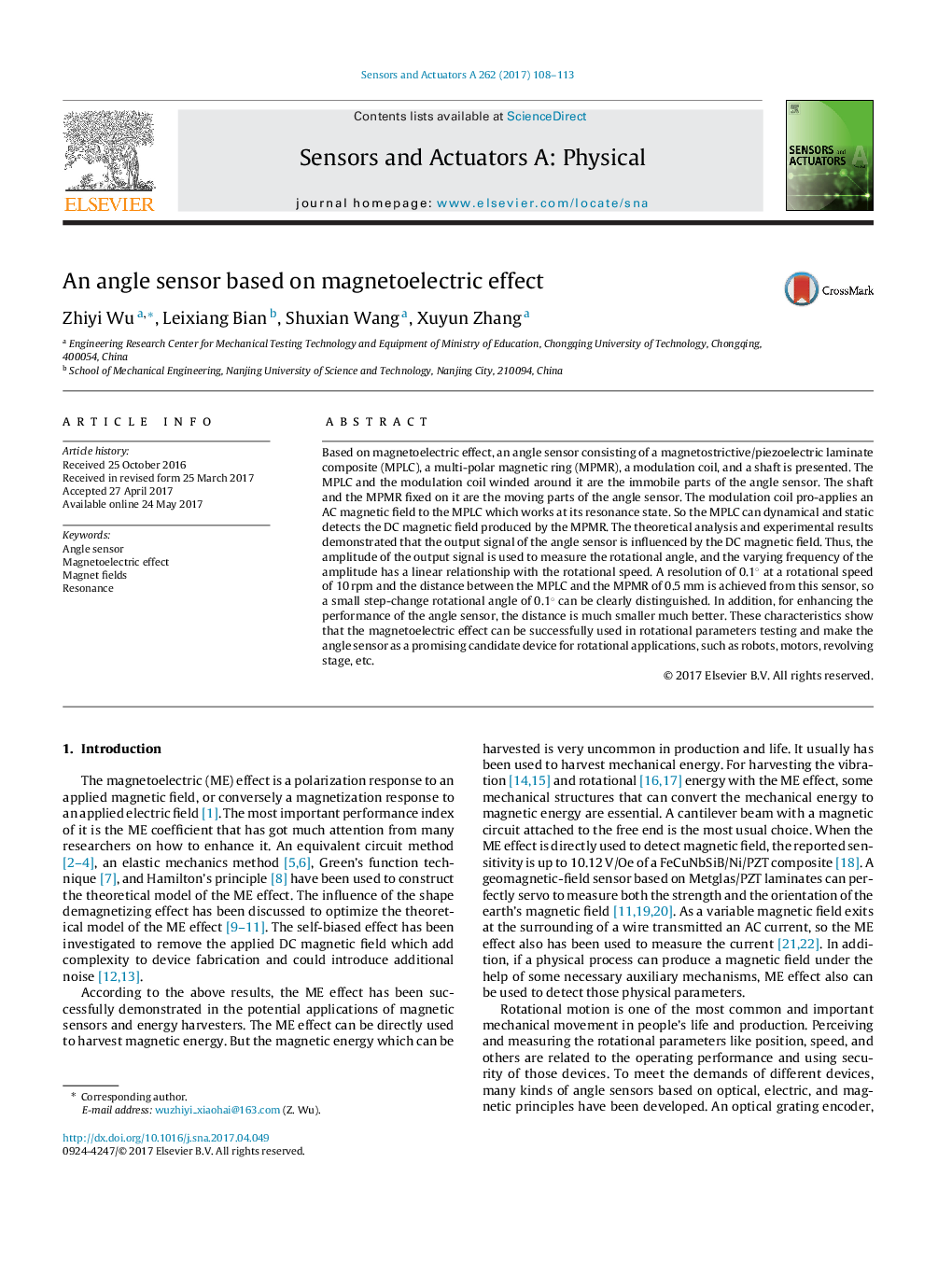| Article ID | Journal | Published Year | Pages | File Type |
|---|---|---|---|---|
| 5008228 | Sensors and Actuators A: Physical | 2017 | 6 Pages |
â¢The magnetoelectric effect has been successfully used in angle detection.â¢Rotational parameters can be dynamical and static measured by the proposed sensor.â¢A small step-change rotational angle of 0.1° can be clearly distinguished.
Based on magnetoelectric effect, an angle sensor consisting of a magnetostrictive/piezoelectric laminate composite (MPLC), a multi-polar magnetic ring (MPMR), a modulation coil, and a shaft is presented. The MPLC and the modulation coil winded around it are the immobile parts of the angle sensor. The shaft and the MPMR fixed on it are the moving parts of the angle sensor. The modulation coil pro-applies an AC magnetic field to the MPLC which works at its resonance state. So the MPLC can dynamical and static detects the DC magnetic field produced by the MPMR. The theoretical analysis and experimental results demonstrated that the output signal of the angle sensor is influenced by the DC magnetic field. Thus, the amplitude of the output signal is used to measure the rotational angle, and the varying frequency of the amplitude has a linear relationship with the rotational speed. A resolution of 0.1° at a rotational speed of 10 rpm and the distance between the MPLC and the MPMR of 0.5 mm is achieved from this sensor, so a small step-change rotational angle of 0.1° can be clearly distinguished. In addition, for enhancing the performance of the angle sensor, the distance is much smaller much better. These characteristics show that the magnetoelectric effect can be successfully used in rotational parameters testing and make the angle sensor as a promising candidate device for rotational applications, such as robots, motors, revolving stage, etc.
